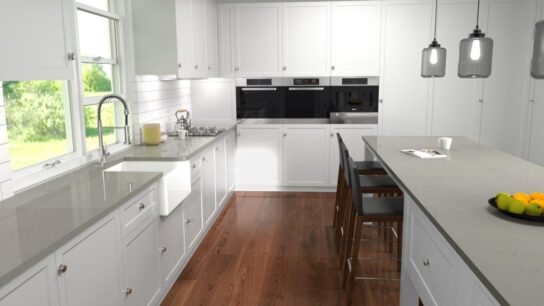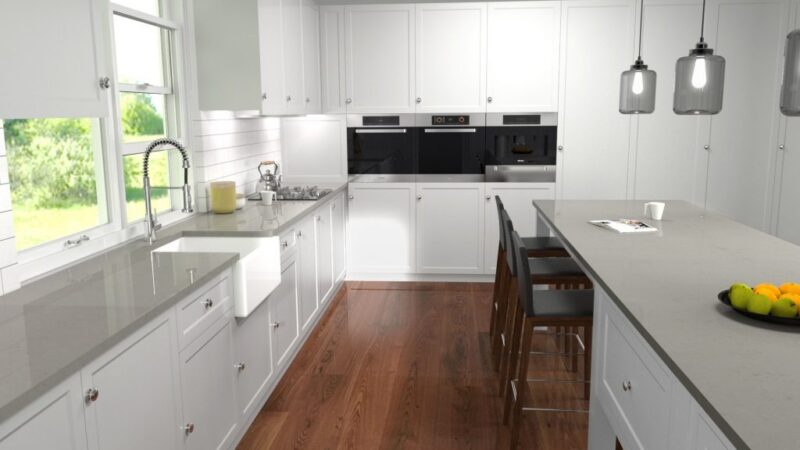German silver, also known as nickel silver, is a unique and versatile metal alloy that has been used in various forms of crafting for centuries. Though it does not actually contain silver, the alloy is named for its silvery appearance and has earned its place in the world of luxury items and ornamental craftsmanship. German silver’s rich history, elegant aesthetic, and durability make it an ideal material for creating high-end jewelry, home decor, cutlery, and various other luxury goods. This article delves into the fascinating properties of German silver, its historical context, and the reasons it continues to be a favored material for luxury crafting.
German silver is a non-precious metal alloy composed primarily of copper, nickel, and zinc. Despite its name, it contains no silver at all. The alloy is known for its silvery-white appearance, which closely resembles sterling silver, making it a popular choice for those who want the look of silver at a more affordable price point. German silver is durable, corrosion-resistant, and easily malleable, which makes it an excellent material for a range of crafting applications, from fine jewelry to ornate household items.
The proportions of copper, nickel, and zinc can vary, but typically, the alloy consists of around 60% copper, 20% nickel, and 20% zinc. The specific combination of these metals results in a shiny, silver-like appearance, which can be polished to a high sheen. Over time, the alloy will develop a unique patina, particularly when exposed to the elements, which adds character and charm to the finished pieces.
The History of German Silver
The history of German silver dates back to the 19th century when it was first developed in Germany. German craftsmen were searching for an alternative to expensive sterling silver, which was difficult to work with and costly to obtain. They created a durable alloy that mimicked the appearance of silver while being more affordable and accessible. The use of German silver quickly spread across Europe, and the material became highly popular in both everyday items and luxury goods.
While German silver was initially used for functional items such as coins, cutlery, and household goods, it soon found its way into the world of ornamental and decorative objects. The appeal of its metallic shine, combined with its affordability and malleability, made it a favorite among artisans and jewelry makers. Over the years, German silver has been used to craft everything from elegant home accessories, like trays and vases, to intricate jewelry pieces such as rings, necklaces, and bracelets.
Today, German silver is still used extensively in the production of luxury items. Although it has been replaced in some applications by more expensive metals like sterling silver, the beauty and versatility of German silver continue to make it a sought-after material in the luxury crafting world.
Why German Silver Is Ideal for Luxury Crafting
German silver is widely regarded for its ability to combine both beauty and functionality, making it an excellent choice for luxury items. Here are several key reasons why this material continues to be used in high-end craftsmanship:
1. Aesthetic Appeal
German silver’s appearance is one of its most attractive qualities. The alloy’s shiny, silvery-white finish gives it a sophisticated, elegant look, which closely resembles sterling silver. This makes it an ideal material for crafting luxury pieces, as it exudes the same level of beauty and prestige, without the high price tag of sterling silver. The sheen of German silver can be polished to a mirror-like finish, making it perfect for creating statement pieces such as rings, bracelets, earrings, and necklaces.
Moreover, German silver has the unique ability to develop a beautiful patina over time, which adds to its charm and character. This natural aging process can enhance the beauty of a piece, making it more distinctive and giving it a timeless, vintage look. Whether it is used for contemporary or traditional designs, German silver maintains its elegance, making it a favorite for luxury artisans.
2. Durability and Strength
One of the key advantages of German silver is its durability. The alloy is resistant to corrosion, tarnish, and rust, which means that it retains its appearance and functionality for a long time. Unlike pure silver, which can easily become scratched or tarnished over time, German silver’s strength makes it less prone to damage, making it ideal for items that are intended to be used regularly or worn for extended periods, such as jewelry, cutlery, and decorative accessories.
In addition to being resistant to tarnish, German silver also has a high level of hardness, which allows it to retain its shape and resist bending or denting. This makes it an excellent choice for creating pieces that need to maintain their structural integrity over time, especially when they are exposed to daily wear and tear.
3. Workability and Versatility
Another reason German silver is so highly regarded in luxury crafting is its malleability. The alloy is relatively easy to work with, allowing skilled artisans to shape and mold it into intricate and detailed designs. This versatility makes German silver ideal for crafting everything from delicate jewelry pieces to larger decorative items. Whether casting, engraving, or soldering, German silver can be manipulated into almost any form, allowing for great creativity and artistic expression.
This workability also extends to the alloy’s ability to take on different finishes. German silver can be polished to a high shine, matte finished, or even oxidized to create different effects. This flexibility in how it can be finished adds to the overall appeal of German silver as a material for luxury goods, as it can be tailored to suit a wide range of design aesthetics.
4. Affordability
One of the main reasons German silver is still used in luxury crafting is its affordability. Despite its resemblance to sterling silver and its ability to create beautiful, high-end pieces, German silver is considerably less expensive than pure silver. This makes it a popular choice for artisans and designers who want to create luxury pieces without breaking the bank. The affordability of German silver has allowed for greater accessibility to luxury goods, as it can be used to craft pieces that are both elegant and more affordable than those made from precious metals.
5. Eco-Friendliness
In an era where sustainability is increasingly important, German silver offers an eco-friendly option for luxury crafting. The alloy is made from non-precious metals such as copper, nickel, and zinc, which are abundant and less resource-intensive to mine compared to precious metals like silver and gold. Furthermore, German silver can be recycled and reused without compromising its quality, making it a sustainable choice for artisans looking to create environmentally conscious luxury pieces.
Crafting Luxury with German Silver
The versatility of German silver makes it ideal for a wide range of luxury items. Here are a few examples of how German silver is used in the creation of high-end pieces:
1. Jewelry
German silver has been a staple material in jewelry making for centuries. Its beautiful, shiny appearance makes it an excellent choice for crafting earrings, necklaces, bracelets, and rings. Artisans use German silver to create intricate designs, often incorporating gemstones, engravings, or other decorative elements to enhance the beauty of the piece. German silver’s durability and resistance to tarnish ensure that these pieces will retain their elegance over time.
2. Cutlery and Tableware
German silver is often used to craft high-end cutlery, serving trays, and other luxury tableware. Its durability and tarnish resistance make it an excellent choice for items that are used regularly, such as forks, spoons, and knives. In addition, German silver’s elegant appearance adds a touch of sophistication to any dining table, making it a popular choice for upscale restaurants and homes.
3. Home Decor
From decorative trays and bowls to vases and figurines, German silver is a popular material for creating luxury home decor items. The alloy’s malleability allows artisans to craft intricate designs and unique shapes, while its silvery appearance adds a touch of elegance to any room. German silver home decor items can serve as beautiful statement pieces or functional items that add both style and utility to a living space.
4. Antique Reproductions
The rich history of German silver makes it an ideal material for crafting antique reproductions. Many collectors and antique enthusiasts seek out pieces made from German silver, as the alloy can mimic the look and feel of traditional silver pieces from bygone eras. Whether reproducing old-world jewelry, tableware, or decorative accessories, German silver offers an affordable yet luxurious alternative to silver.
Conclusion
German silver is a versatile, durable, and aesthetically pleasing material that continues to play a significant role in the crafting of luxury items. Its ability to mimic the appearance of sterling silver, combined with its strength, affordability, and workability, has made it a favored choice among artisans and designers for centuries. Whether used in jewelry, home decor, or cutlery, German silver’s timeless beauty continues to shine, offering a luxurious alternative to precious metals at a more accessible price. As the demand for quality craftsmanship and elegant design grows, German silver remains an essential material for creating pieces that embody both artistry and luxury.



